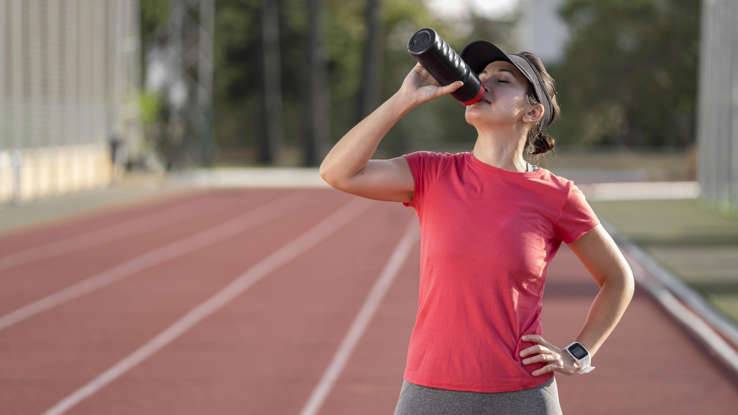Adapting your body to high temperatures while jogging in the summer is crucial to ensuring your safety and optimizing your performance. Here are some strategies and tips to help you adapt and cope with the heat:
Gradual Acclimatization: Start by gradually exposing your body to higher temperatures. Begin your jogging routine in the cooler parts of the day and gradually increase the duration and intensity of your workouts over time. This allows your body to adapt to the heat more effectively.
Stay hydrated. Proper hydration is essential for exercising in hot weather. Drink plenty of fluids before, during, and after your jog. Water is the best choice, but you can also consume sports drinks that contain electrolytes to replenish the minerals lost through sweat.
Dress appropriately: Opt for lightweight, loose-fitting, and breathable clothing made from moisture-wicking materials. These fabrics help keep you cool by allowing sweat to evaporate quickly and providing better air circulation around your body.
Protect Yourself from the Sun: Apply a sweat-resistant sunscreen with a high SPF to protect your skin from harmful UV rays. Wear a hat or visor to shield your face and eyes from direct sunlight. Sunglasses with UV protection are also important to prevent eye strain and damage.
Time Your Workouts: Plan your jogging sessions during the cooler parts of the day, such as early morning or late evening, to avoid the peak heat hours. This reduces the risk of heat-related illnesses and allows you to exercise more comfortably.
Modify Intensity and Duration: Be mindful of your body's signals and adjust the intensity and duration of your workouts accordingly. Slow down your pace, take regular breaks, and listen to your body. Pushing yourself too hard in extreme heat can lead to heat exhaustion or heatstroke.
Seek shaded or cooler routes: Plan your jogging route to include shaded areas or areas with more breeze. Running in parks or near bodies of water can provide a cooler environment compared to urban areas with concrete or asphalt.
Use cooling methods: Take advantage of cooling techniques to lower your body temperature. Wet a bandana or towel with cold water and wrap it around your neck or place it on your head. Additionally, you can use handheld or portable fans to create airflow and provide some relief during your run.
Listen to your body. Pay attention to any signs of heat-related illnesses, such as dizziness, nausea, excessive sweating, or cramps. If you experience any of these symptoms, stop exercising, find a shaded area, and hydrate yourself immediately. If the symptoms persist or worsen, seek medical assistance.
Cross-train and vary your workouts. If the heat becomes too intense or you need a break from running, consider alternative forms of exercise. Swimming, cycling, or indoor workouts can provide a change of pace while still maintaining your fitness level.
Remember, adapting to high temperatures takes time, so be patient with yourself. By gradually acclimatizing your body, staying hydrated, dressing appropriately, and being mindful of your limits, you can enjoy your summer jogging routine while minimizing the risks associated with exercising in the heat. Stay safe, have fun, and embrace the joys of summer running!


